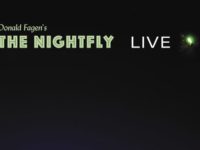It’s easy to categorize the standout aspects on some Steely Dan songs; there are guitar solos, sax solos, drum rhythms, bass lines and keyboard accompaniments that pushed songs over the top from being merely good to outstanding. Walter Becker and Donald Fagen didn’t rely entirely on those obvious areas to create inspired moments, however; sometimes the brilliance came from other kinds of horns, background vocals or even a flapamba. What the heck is a “flapamba”? We’ll explain that in a bit.
S. Victor Aaron, Preston Frazier and John Lawler pick out their favorite Steely Dan and solo Steely Dan performances that they like from these offbeat sources. Click on the song titles, and you’ll find our earlier, fuller takes on these songs.
S. VICTOR AARON
5. “Girlfriend” – Bob Sheppard (bass clarinet): Just as the bridge begins to meander, out pops Eric Dolphy in the form of Sheppard. Another instance of the mad genius of Walter Becker; where else and with who else in all of rock would you find a whack jazz bass clarinet solo?
4. “I’m Not the Same Without You” – Will Galison (harmonica): Fagen sometimes likes to sneak a little Ray Charles into his songs and here it comes from the savory blues-y harmonica of Will Galison. Galison tried to avoid the subtle harmonic landmines of the song to get, in his words, “from the beginning to the end in an elegant and interesting way,” and he succeeded with flying colors.
3. “Peg” – Michael McDonald (background vocals): The harmonies were so close to each other and for McDonald to sing them alongside himself was “a learning experience” for him. Seperately, his vocal parts sound almost comical but put together, they’re as rich and vibrant as a barbershop quartet.
2. “Rikki Don’t Lose That Number” – Victor Feldman (flapamba): The part left off the radio version of Steely Dan’s highest charting song is also the one of the more experimental moments in the whole Steely Dan discography. The real intro — preceding the “Song For My Father” riff — features Feldman playing a flapamba, a variant of the marimba, in a rootless romp evocative of early-period Bobby Hutcherson.
1. “Royal Scam” – Bobby Findley (trumpet), Dick “Slyde” Hyde (trombone): The album’s concluding title cut was one of the few moments on that record where Larry Carlton took a backseat to another lead instrument – actually, two lead instruments. Findley’s muted trumpet goes into call-and-response with Fagen’s vocal starting after the first chorus, matching the cinematic storyline with short, sharp dramatic flourishes. After a couple of lines in a verse, the task is handed off to Hyde, whose own, slurring remarks carries over the same sentiment.
PRESTON FRAZIER
5. “What I Do” – Howard Levy (harmonica): To state that the former Bela Fleck and the Flecktones multi-instrumentalist Howard Levy was an extremely gifted musician is an understatement. Fagen has employed a few ultra-talented harmonica players yet Levy’s performance in “What I Do” stands out with the punchy rythym swagger and echoes of blues. Levy evokes the perfect setting for this Ray Charles-inspired song and his playing stands with the best solos of any type on a Dan-related album.
4. “Almost Gothic” – Michael Leonhart (trumpet): “Almost Gothic” stands as one of the most elegant and straightforward songs in Dandom. With its subtle acoustic guitar and delicate drum work it’s almost too conventional, at least until you listen to the lyrics. Michael Leonhart, who was mistakenly left uncredited, provides a heart-tugging brief muted trumpet solo which frames it all. Sure, there are other great trumpet solos in the Steely Dan discography (“Babylon Sisters,” “Royal Scam,” etc.), but this is my favorite.
3. “Peg” – Paul Griffin (background vocal): Paul Griffin’s ad-libbed background vocal stands as one of the most interesting, fun and enduring spontaneous performances on a Steely Dan recording. The late keyboardist had the habit of singing along with the playback as he played electric piano. Luckily for the listener, Gary Katz, Becker and Fagen thought to capture his vocal performance and mix it in with Michael McDonald’s multi-tracked backing vocals. These are the things that make classic songs classics.
2. “Razor Boy” – Victor Feldman (vibraphone): Feldman was an accomplished keyboardist, drummer and composer but Steely Dan’s first phase of albums are filled with Feldman’s vibe and marimba playing. On “Razor Boy,” his vibes are a perfect match to Ray Brown’s acoustic bass and a perfect counterpart to Jeff Baxter’s pedal steel guitar. Sure, he was great on “Home At Last” and Rikki Don’t Lose That Number,” but his solo on “Razor Boy” is epic.
1. “Downtown Canon” – Carmen Carter, Carolyn Leonhart-Escoffery, Kate Markowitz, Cindy Mizelle, Windy Wagner (background vocals): The kicker for this Walter Becker solo song is the vocal arrangement, which were likely handled by Circus Money producer Larry Klein who has a proven track record of working with talented female vocalists. “Downtown Canon” shines from start to finish and the vocal accents are a treat. By the time you get to the vocal middle solo you are already blown away. Catch you on the turnaround.
JOHN LAWLER
5. “Razor Boy” – Victor Feldman (vibraphone), Jeff Baxter (pedal steel): Victor Feldman, percussionist wunderkind, sweetens the verses and propels Latin jazz riffs as a bridge to the chorus on this deeply cynical track. Somehow the depth of the recording is strengthened by a completely inappropriate pedal steel offered by Skunk Baxter from the second verse into a subversive solo, like a cold north wind.
4. “Almost Gothic” – Michael Leonhart (trumpet): 21st Century Steely Dan paints with unusual colors and accents. Michael Leonhart has been a consistent collaborator as arranger and producer shaping their more live-sounding tracks. Leonhart’s all feel, cool jazz solo on muted trumpet conjures images of a vampires gone good times in a sumptuous, smooth way, seamlessly blending into the multiple voice soundscape.
3. “I.G.Y.” – Donald Fagen (synth blues harp): The synth blues harp first appeared on “Home at Last,” bouncing over a sick (good sick) rhythm section. Donald delivers the intro theme and iconic solo over this wistful and ironic flagwaving futurama masterpiece of what could have been. A highly stylized set of wails and wonder.
2. “Negative Girl” – Dave Shenk (vibraphone solo): Vinnie Colaiuta on the skins, Tom Barney’s bass, with Dean Park and Paul Jackson Jr. on dueling rhythm guitar lay down a luscious live tracked set – an ode to the ultimate neurotic femme fatale. The tune bobs and weaves until Dave Shenk’s remarkable vibraphone solo: twenty seconds of effervescence where the entire band swings and bubbles to a crescendo. Steely Dan as a jazz quintet.
1. “Pixeleen” – Donald Fagen, Carolyn Leonhart (call and response vocals): A song about a video game girl come to life, “Pixeleen” — the digital Lara Croft queen — features a chorus with clever interplay between Donald and Carolyn Leonhart, long-time Dan tour veteran and jazz vocalist. They bounce the call and response ball in chorus and bridge around like Wimbledon baseline aces. In doing so, Donald and Carolyn flip the lyrics and Pixeleen’s narrative on its ear.
- Ernesto Cervini’s Turboprop, “When I Fall” (2024): Video premiere - March 15, 2024
- Disaster Pony,“Dead Neon & The Noon Sun” from ‘Disaster Pony’ (2024): Video premiere - February 27, 2024
- Christopher Hoffman, “Farewell Forever” from ‘Vision Is The Identity’ (2024): Streaming premiere - February 19, 2024



